Can someone check my homework?
#f(x)= (x-2)^(2) (x-5)#
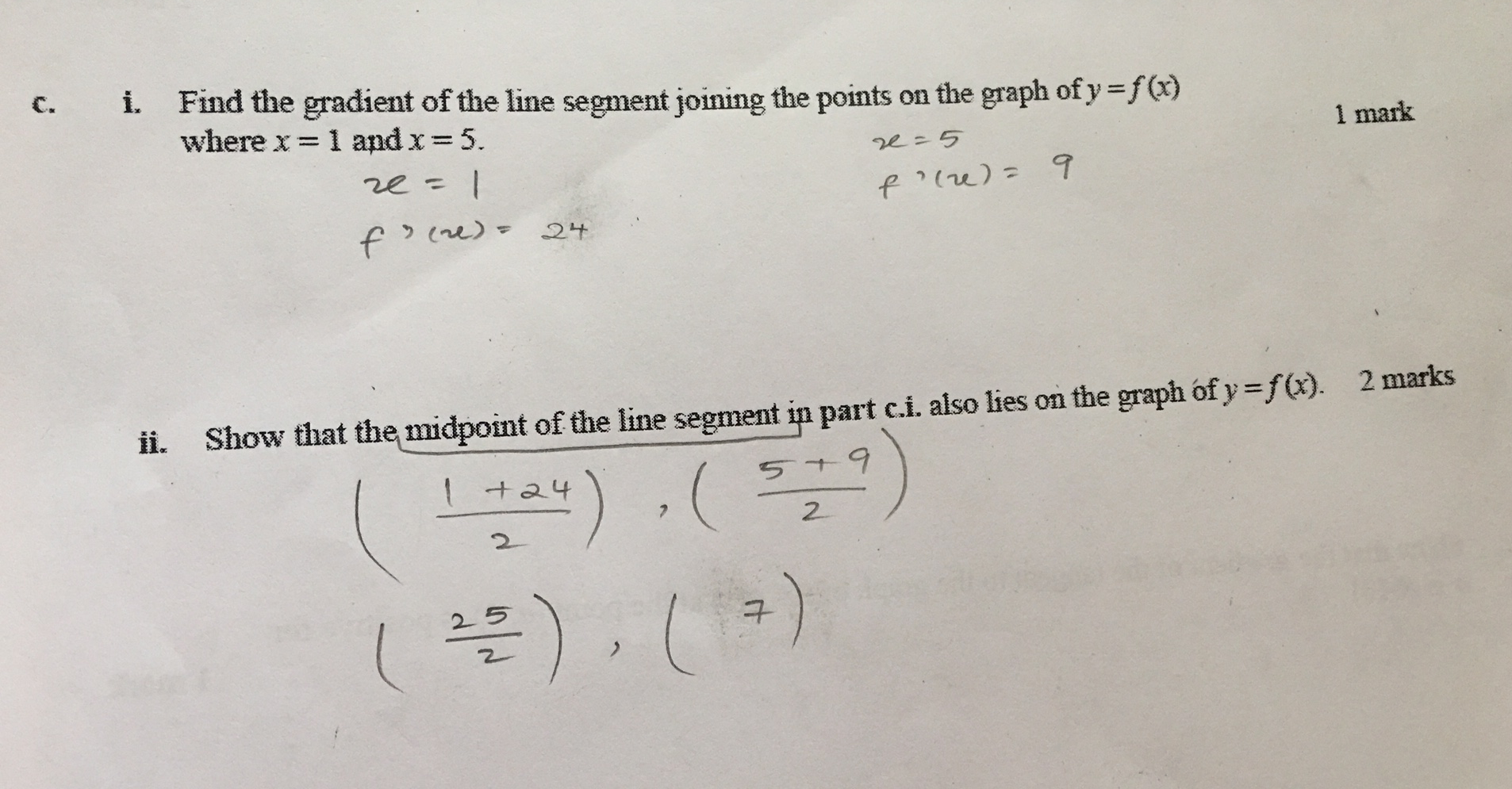
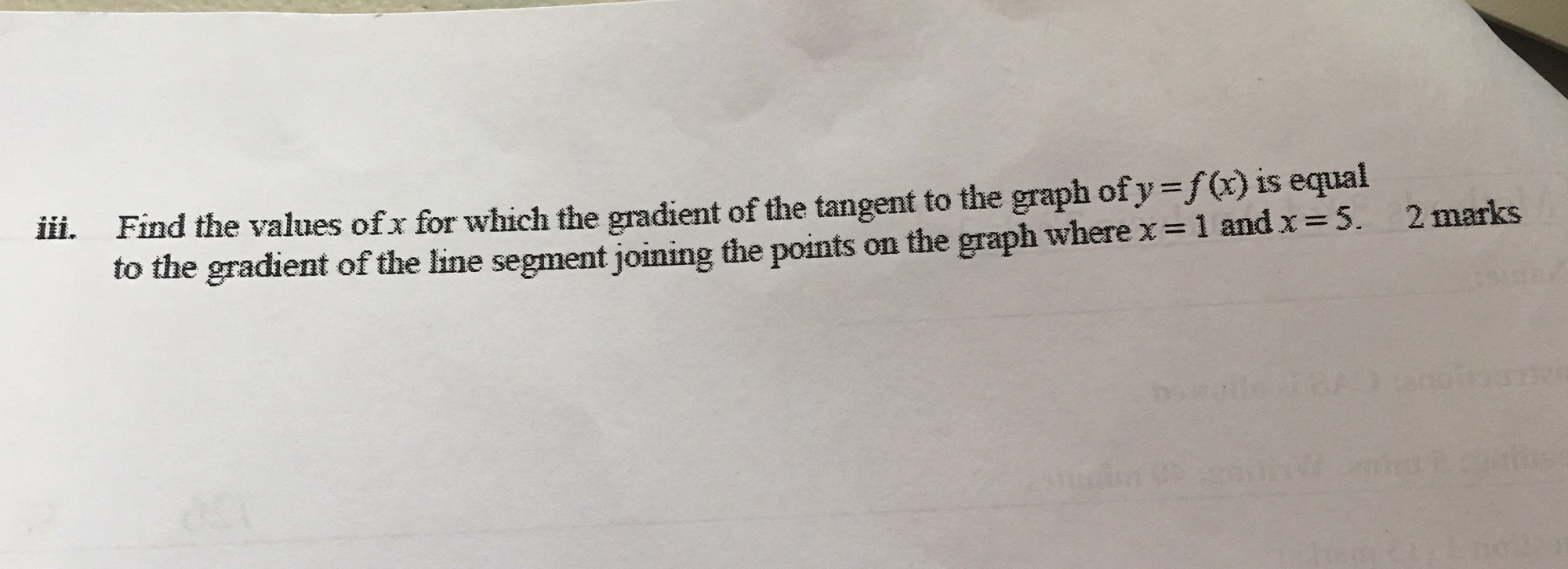


1 Answer
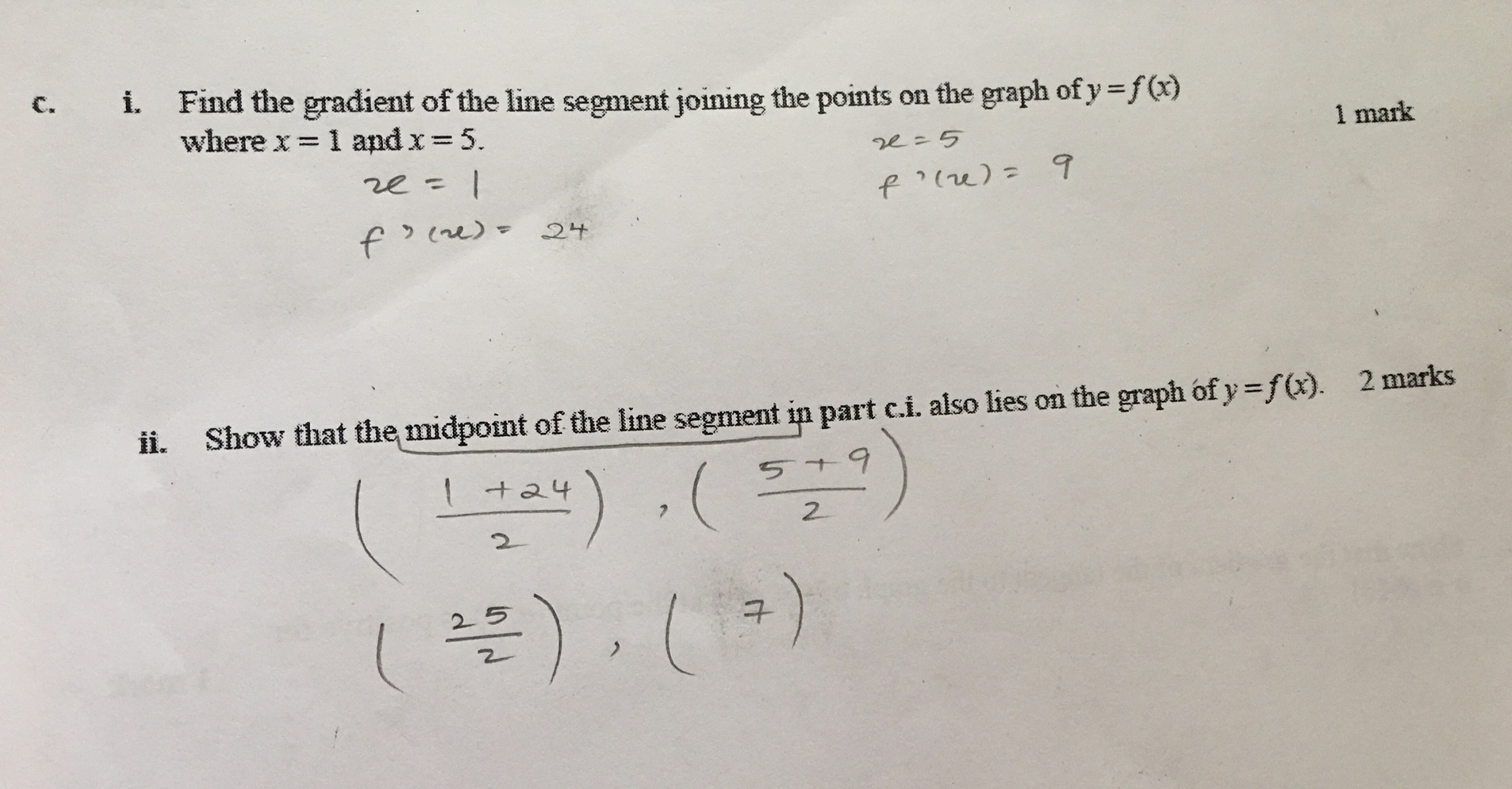
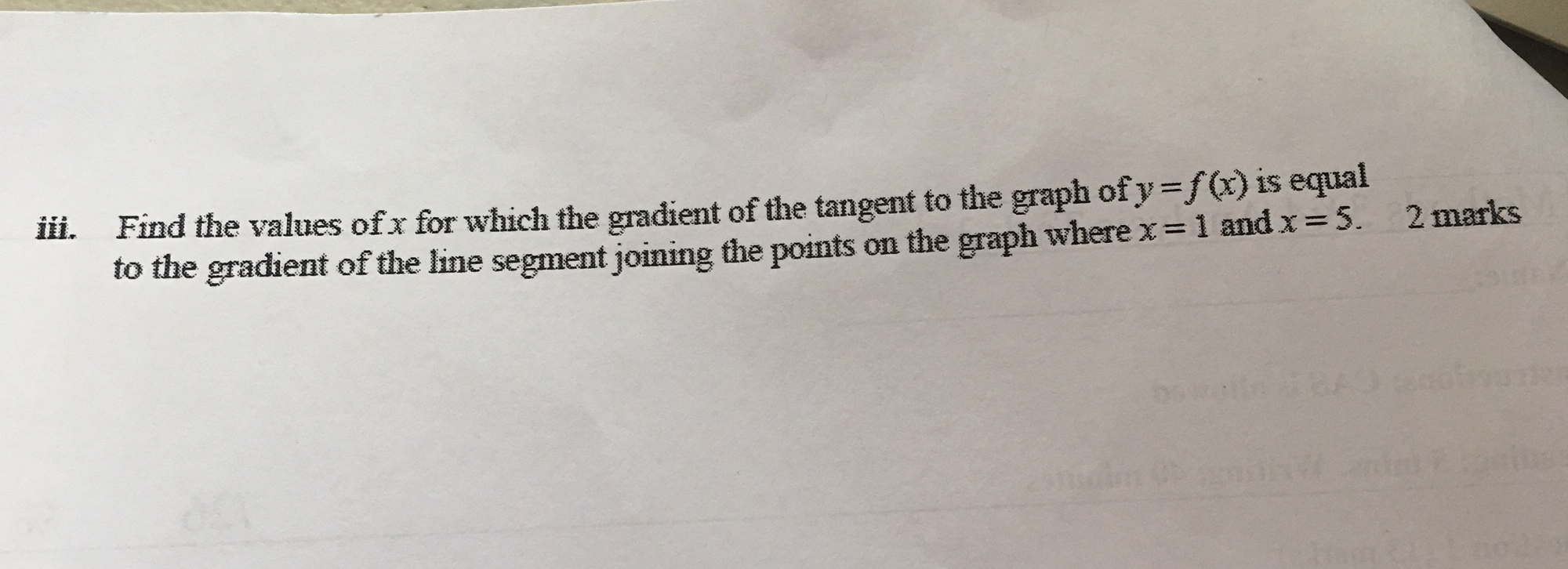
Explanation:
i).
We are given
First find the y coordinates by plugging x into
Coordinates:
Coordinates:
These are the endpoints of the line segment.
Gradient is:
Gradient is 1
ii)
The coordinate of the midpoint are given by:
If this point lies of
This lies on
iii)
If the gradients are are equal ie
expanding
Since this is a gradient function and we need the gradient to be
We solve this for
Using quadratic formula give:
These are the values of
This is confirmed by the graph:
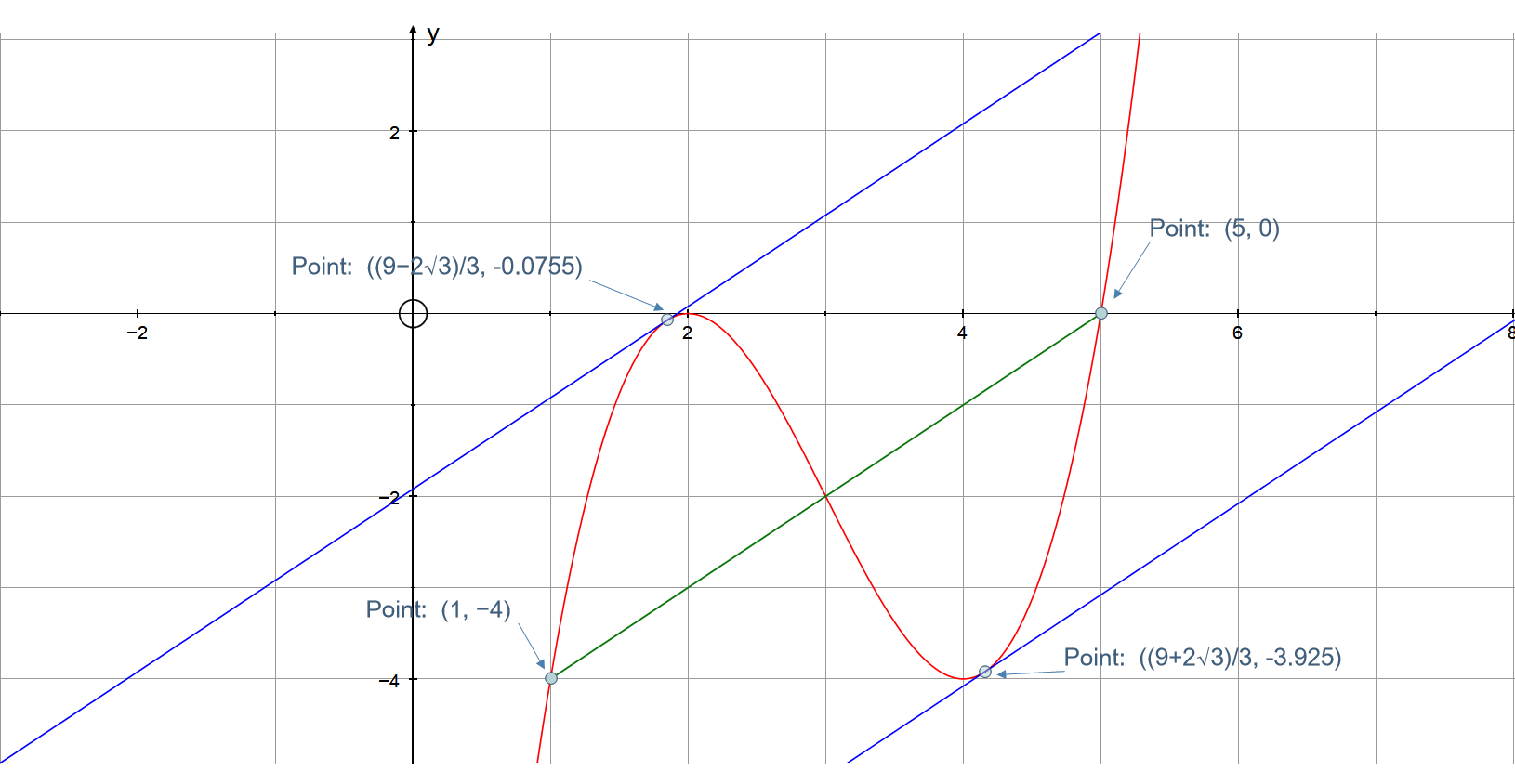
I don't know if you are supposed to use calculus methods to answer iii. This is the way I would solve it.
You seem to have the wrong results for i and ii. I don't know how you got
Hope this helps.


